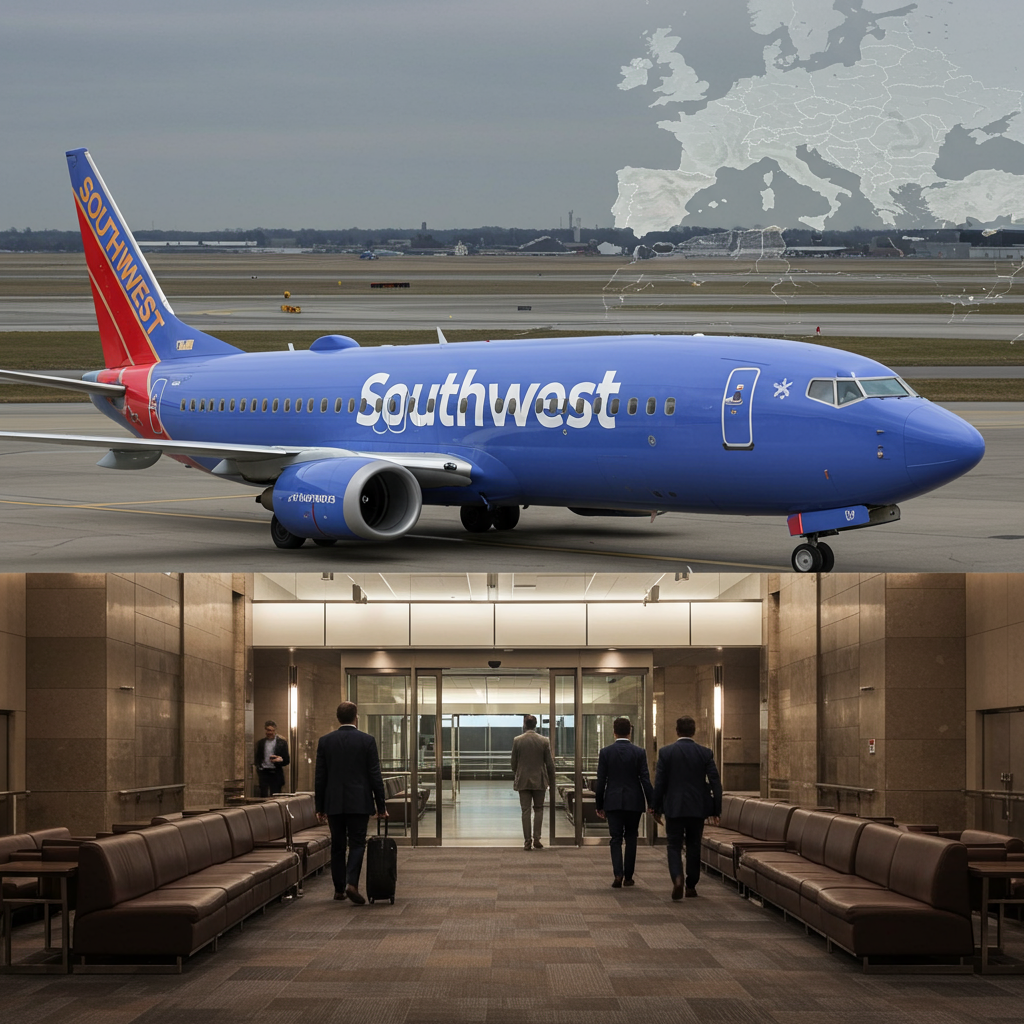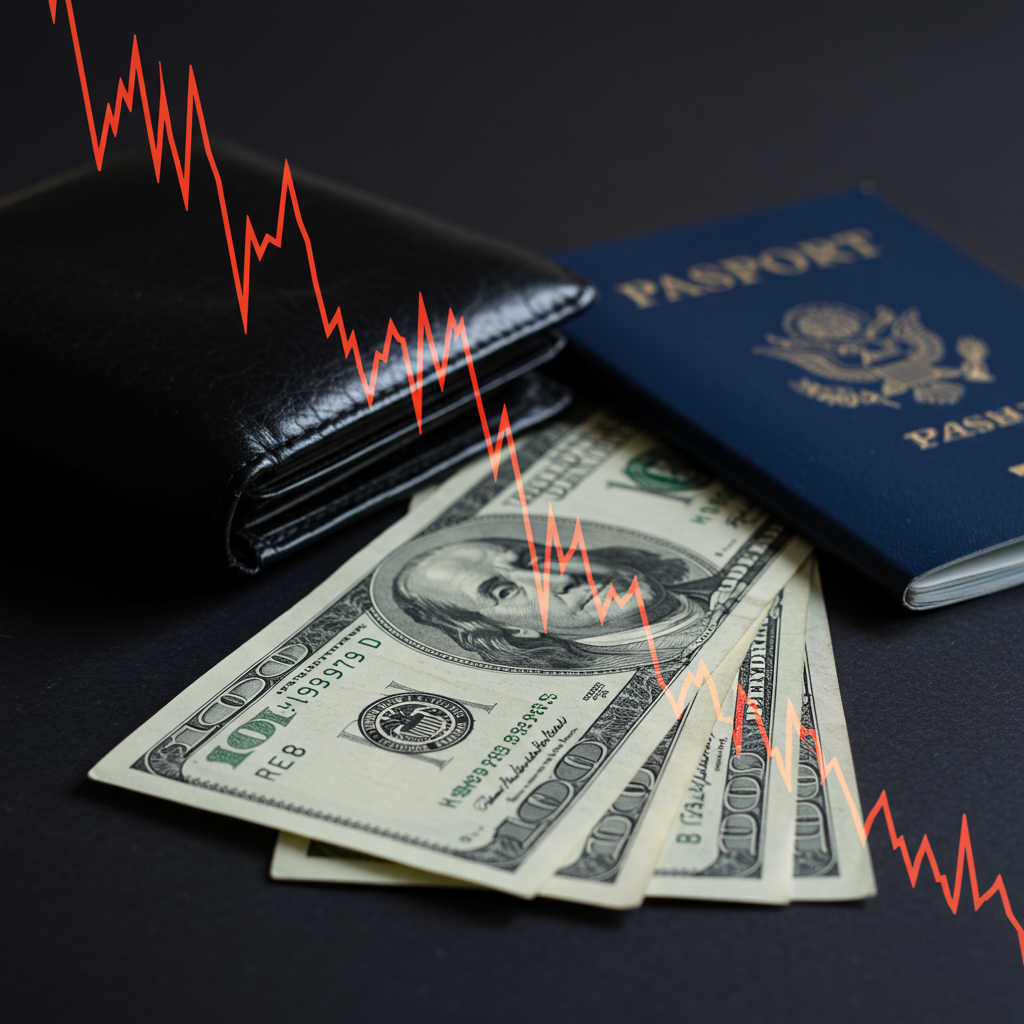Is the iconic southwest Airlines brand undergoing a radical transformation? Known for its “Bags Fly Free” policy, open seating, and no-frills approach, the carrier seems poised for a significant shift. Recent statements from leadership suggest Southwest is seriously considering ventures like airport lounges, premium seating options, and even flights to Europe. This potential pivot aims to attract higher-spending travelers and compete more directly with traditional airlines.
Facing financial pressures and pressure from activist investors, Southwest has already begun moving away from some long-standing principles. The airline recently ended its free checked baggage policy for most fares, a move previously considered off-limits. Assigned seating, another departure from its history, is also on the horizon for 2026, with new cabin configurations featuring extra legroom seats starting to appear on jets by mid-2025. These changes, along with new fare bundles and loyalty program adjustments, have stirred debate among long-time flyers who feel the airline is losing its unique identity.
Why Southwest Wants Premium Flyers
Luxury travel has been a major driver of growth in the aviation sector over the past five years. Airlines like American, Delta, and United have invested heavily in premium cabins, lavish airport lounges, and expanded international networks. These airlines earn significant revenue from business and affluent leisure travelers seeking comfort and exclusive perks. Southwest, historically focused on efficiency and affordability, has largely missed out on this lucrative segment. CEO Bob Jordan indicated the company is open to exploring new strategies to capture this market share. “Whatever customers need in 2025, 2030, we won’t take any of that off the table,” Jordan stated. This suggests a willingness to adapt the “Southwest way” to meet evolving traveler expectations.
Airport Lounges on the Horizon?
A key element of the premium travel experience is airport lounge access. Southwest currently does not offer its own branded lounges, leaving its travelers without a dedicated space before their flights, unlike customers of legacy carriers or those with premium credit cards. Jordan specifically mentioned Nashville, Tennessee, as a market where Southwest sees demand for lounges. Nashville International Airport (BNA) is a Southwest stronghold with over 50% market share, serving a rapidly growing and increasingly affluent population. Targeting a city like Nashville for a potential first lounge makes strategic sense, aiming to keep these valuable customers who might otherwise fly competitors for premium amenities. Delta and JetBlue are already expanding or launching their own lounge networks to cater to premium passengers.
European Ambitions and Necessary Steps
Perhaps the most ambitious possibility raised is the prospect of Southwest flying to Europe. This would represent a monumental shift for an airline that has historically focused on domestic and nearby international destinations, exclusively operating Boeing 737 aircraft. The airline would need to acquire long-range planes, as Jordan acknowledged. However, recent actions indicate serious intent. Southwest filed paperwork with the U.S. Department of Transportation in May 2025 for blanket authority to serve countries with Open Skies agreements, covering over 120 nations including major European markets.
While acquiring new aircraft could take time, Southwest is already exploring ways to connect its customers to Europe. A new interline partnership with Icelandair, confirmed in mid-2025, allows travelers to book single-ticket journeys from several U.S. Southwest cities through Icelandair’s Reykjavik hub to various European destinations like London, Paris, and Frankfurt. This partnership, starting at Baltimore/Washington International Airport and expanding to others including Nashville and Denver, serves as a test run for facilitating European access. There’s even speculation about Southwest launching direct flights to Reykjavik using the existing Boeing 737 MAX 8, which has sufficient range for shorter transatlantic hops.
Why the Identity Shift?
Commentators suggest that Southwest’s historical model, based on simplicity and a single fleet type, may have reached its limits for growth in the current market. The lack of premium products and a network primarily focused on domestic routes prevents the airline from tapping into profitable segments and global markets. By exploring lounges, premium cabins, and European routes, Southwest is directly addressing these historical limitations. The move to list fares on third-party travel agency sites also necessitates offering lower, unbundled fares to compete, pushing the airline further from its all-inclusive image.
This strategic pivot is not without significant challenges and risks. Operating long-haul international flights introduces operational complexities and higher costs compared to their current short-to-medium haul network. The airline faces intense competition from established carriers already serving these premium and transatlantic markets. Crucially, Southwest must navigate this transition without alienating its core base of budget-conscious travelers who have historically valued its simpler model and unique perks like free bags. Balancing premium aspirations with its deeply ingrained brand identity will be critical for its future success.
Frequently Asked Questions
What specific premium services is Southwest Airlines reportedly considering?
Southwest Airlines is exploring several significant premium offerings to attract higher-spending customers. According to CEO Bob Jordan, the airline is considering introducing airport lounges, potentially opening the first in markets like Nashville. They are also looking at adding premium seating options, which could include a true first class or business class cabin beyond their new extra-legroom seats. Additionally, the airline is examining the possibility of launching long-haul flights, specifically routes to Europe.
How is Southwest Airlines already trying to appeal to premium travelers or gain access to Europe?
Southwest has already taken steps to cater to different traveler needs. They have introduced red-eye flights to appeal to business travelers and are adding extra-legroom seats to their cabins, available on select aircraft starting mid-2025. To test the waters for European access without immediately needing new aircraft, Southwest launched an interline partnership with Icelandair in 2025. This allows customers to book connecting itineraries from various U.S. cities through Reykjavik to multiple European destinations.
Why is Southwest Airlines making these significant changes now?
Several factors are driving Southwest’s strategic shift away from its traditional model. The airline faces pressure from activist investors to improve financial performance. They are also responding to evolving market trends, where premium and luxury travel segments are driving industry growth. By targeting premium flyers and potentially expanding internationally, Southwest aims to compete more effectively with rivals like American, Delta, and United who profit significantly from these segments. The changes are an attempt to adapt to a competitive and evolving travel industry landscape.
A New Chapter for Southwest?
The possibilities of Southwest Airlines offering airport lounges, premium cabins, and flying to Europe mark a potential turning point for the carrier. Driven by competitive pressures and a desire to tap into lucrative markets, Southwest is clearly re-evaluating its long-held identity. While recent changes like ending free bags and introducing assigned seating have generated controversy, the airline appears committed to exploring new avenues. Whether Southwest can successfully evolve while retaining the loyalty of its traditional customer base remains a key question as it navigates this complex transformation.




